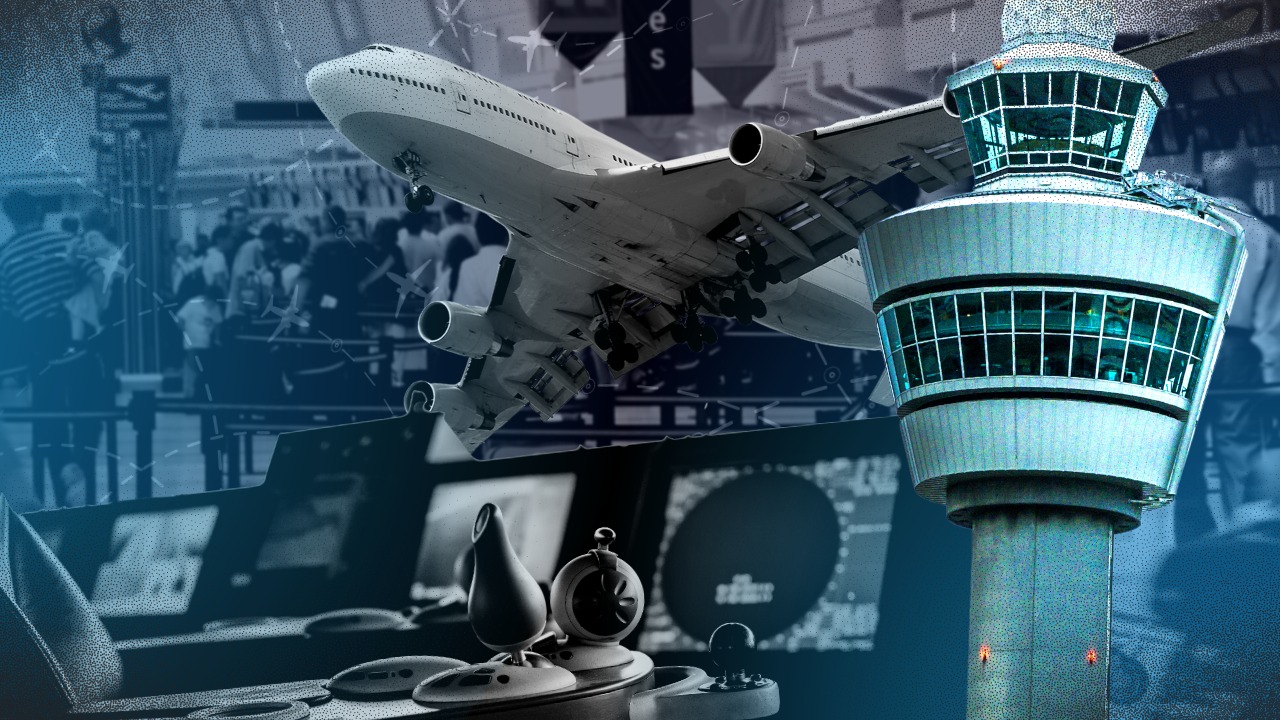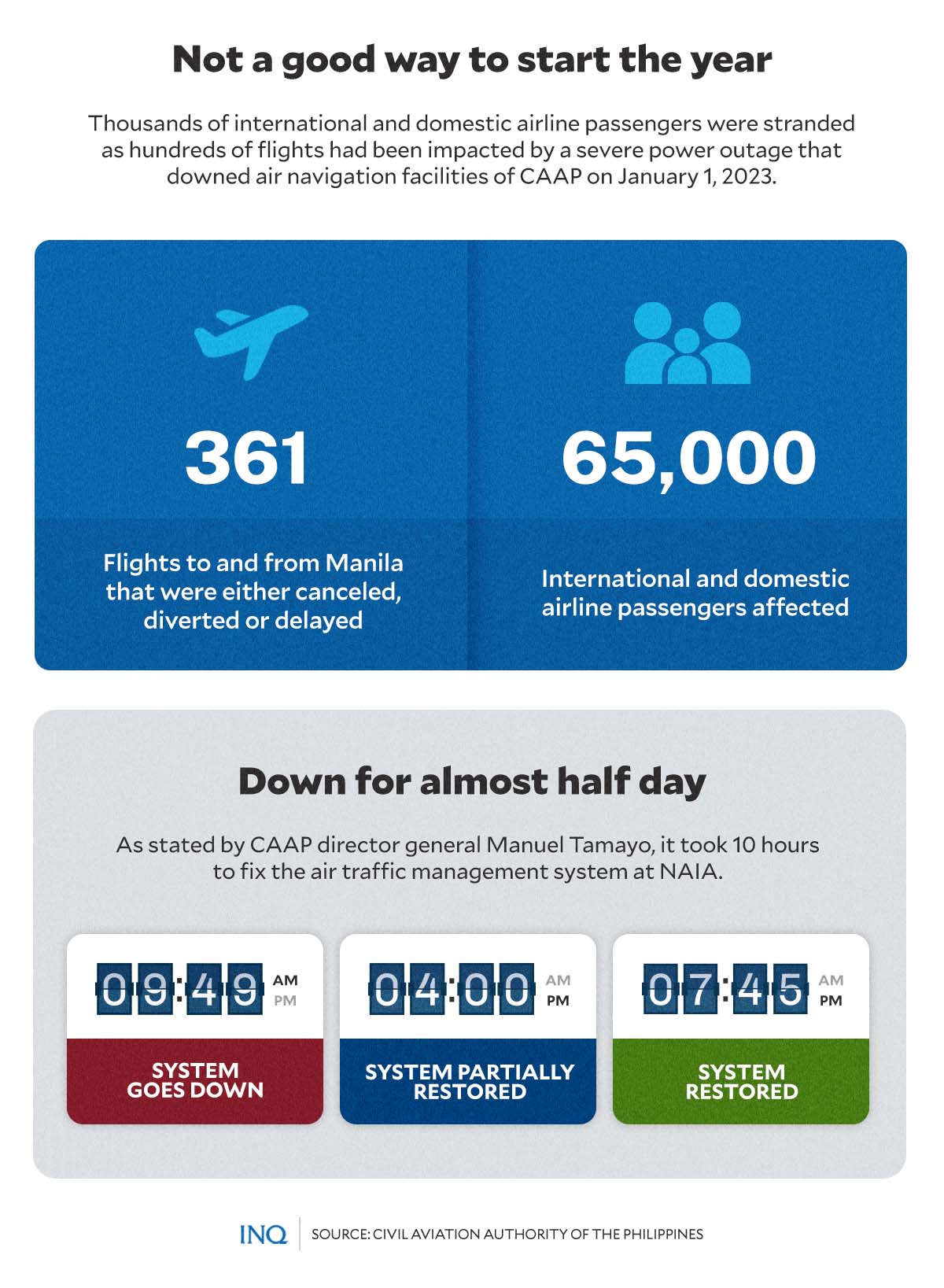MANILA, Philippines—The vacation of Sol Taule and her family in Bali, Indonesia went smoothly as planned, but not until Sunday (Jan. 1), when they were about to return to the Philippines.
Taule, a lawyer, told INQUIRER.net that their flight was at 11 p.m. However, they received a message at 2 p.m. that departure had been rescheduled because of “technical issues.”
“There was no explanation,” she said. “We checked online and saw that some passengers experienced rescheduling and that some flights were even canceled due to air navigation problems at the Ninoy Aquino International Airport (NAIA).”
This, Taule said, prompted them to book a hotel near the airport as they had to “prepare for the possible worst case scenario.” This, however, resulted in additional expenses.
“It was really a hard experience, especially for our elderly parents. We cannot afford to wait for a long period of time at the airport because my father is old and even required a wheelchair when we were at the airport.”
Transportation Secretary Jaime Bautista said 65,000 international and domestic airline passengers had been affected as 361 flights were either canceled, diverted or delayed on Jan. 1, the first day of the new year.
So what went wrong?
Bautista said a severe power outage downed the air navigation system of the Civil Aviation Authority of the Philippines (CAAP). This resulted in loss of communication, radio, radar and internet at NAIA.
“The primary cause identified was a problem with the power supply and the degraded uninterrupted power supply, which had no link to the commercial power, and had to be connected to the other manually.”
READ: Naia outage causes chaos
“The secondary problem was the power surge due to the power outage, which affected the equipment,” Bautista, a former airline executive, said at a press briefing in the evening of Jan. 1.
As stressed by Bautista, the two incidents affected CAAP’s Air Traffic Management Center (ATMC), which went down at 9:49 a.m. The system was completely restored only at 7:45 p.m.
The ATMC, CAAP said, serves as the facility where personnel control and oversee all inbound and outbound flights within the airspace of the Philippines—the reason that flights on Jan. 1 had been grounded.
CAAP said the incident that resulted in the loss of power in the system was due to a problem in the system’s electrical network, with its uninterruptible power supply, which is to be used as backup power supply, also failing.
Bautista explained: “We have an uninterrupted power supply. The problem was not the electricity coming from Manila Electric Co. (Meralco), but with the CAAP equipment.”
He said the equipment providing uninterrupted power supply in two NAIA terminals suddenly went offline and failed to connect to the backup commercial power supply of Meralco.
How essential is ATMC?
The UK Civil Aviation Authority (CAA) said air traffic management “aims to move aircraft safely and efficiently through the airspace system” so controllers keep aircraft set distances apart while moving them from airport to airport using set routes.
Before takeoff, airlines will file a flight plan with air traffic control so every controller who deals with the flight on its journey is aware of its details and route, the UK CAA said on its website—caa.co.uk.
“When an aircraft is at an airport, the pilots on board will be in contact with controllers in the airport’s control tower. Air traffic controllers will look after the aircraft while it is on the ground and give it permission to take off.”
Once airborne the pilot will then normally talk to another controller who uses a radar screen to track the aircraft’s progress through the airways system, which is equivalent to motorways in the sky.
“Each controller is responsible for aircraft in a set piece of airspace. When an aircraft is nearing the edge of their sector they will coordinate its handover to the next controller,” it said.
This will continue through the aircraft’s journey until it is handed over to the controller at the destination airport.
“Most airliners are monitored by controllers using radar in airways and routes known as ‘controlled airspace.’ The majority of airspace that is left is known as ‘uncontrolled’ and this is used by the military and recreational pilots.”
The UK CAA said “in this airspace some air traffic control services are provided, especially near airfields, but in much of the airspace it is the pilots’ responsibility to see and avoid each other.”
Outdated
But despite the importance of air traffic control, CAAP recognized that its own system is “already behind when it was first used in 2019 and has made recommendations to the President on improving the country’s air traffic management system.”
Bautista said: “You know, in one of our Cabinet meetings, we already presented this problem. And we said, ‘We really need to have this [backup] system.”
“And with what happened today, we will be forced to hasten the building or procurement of a backup for our Communications, Navigation, and Surveillance/Air Traffic Management (CNS/ATM) system.”
“This is not really an airport issue. This is an air traffic management system issue. If you will compare us with Singapore, for one, there’s a big difference. They are at least 10 years ahead of us,” he said.
“Although it’s a system that was introduced in 2010, we implemented this in 2018, so the system is already in its midlife, so we really need to improve or modernize it. Maybe we can still use it, but we need to upgrade this to a better system.”
Bautista said it took eight years and P13 billion borrowed from the Japan International Cooperation Agency before the CNS/ATM system was used by the Philippine aviation sector.
He revealed that to upgrade the country’s air traffic management system and to prevent any flight disruptions, more than P13 billion is needed.
“So if we talk about the budget, it’s more than P13B billion now considering we had this five years ago. We will need a huge amount of money for this,” Bautista said.



